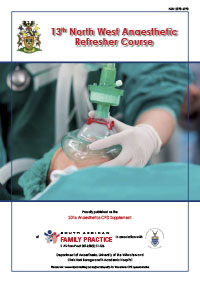Revisiting the Difficult Airway with special reference to the new Difficult Airway Society Guidelines
Keywords:
difficult airways, guidelines
Abstract
Anaesthetists all over the world are doing millions of intubations every year. In about 6% of cases, they will encounter a “difficult airway”.1 Between 2-8% of cases may be associated with a poor view of the laryngeal inlet,2 while failure to achieve intubation is rather uncommon at 1-3 per 1000.2 The American Society of Anesthetists (ASA) defines a difficult airway as a clinical scenario in which a conventionally trained anesthesiologist experiences difficulty with facemask ventilation of the upper airway, difficulty with tracheal intubation or both.3 These difficulties may range from the case where simple airway maneuvers will improve the situation to the dangerous and feared scenario of "can’t intubate, can’t ventilate".
Section
NWU Refresher Course
By submitting manuscripts to SAFP, authors of original articles are assigning copyright to the South African Academy of Family Physicians. Copyright of review articles are assigned to the Publisher, Medpharm Publications (Pty) Ltd, unless otherwise specified. Authors may use their own work after publication without written permission, provided they acknowledge the original source. Individuals and academic institutions may freely copy and distribute articles published in SAFP for educational and research purposes without obtaining permission.

